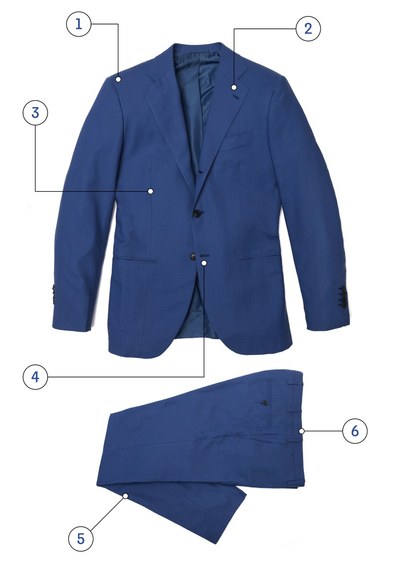By Max Berlinger for GQ.
$10,000 is a lot of money to drop on a single suit. That's $5k apiece if we're splitting things down the middle. You might think, "Who the hell has that kind of money?" And the answer is: more guys than you might think. Just ask the tailoring experts at Kiton, who turn out a wardrobe's worth of five-figure suits every season.
You'll spot one example of the storied Italian house's ultra-luxe tailoring in the latest issue of GQ, worn damn well (if we do say) by Game of Thrones's Michiel Huisman. Still, $10,000 (technically, $9,840 plus tax)?! But start to take a look under the hood--or, in this case, super lightweight cashmere--and you'll start to see that the price is pretty in line with what other all-handmade works of art would go for. Here, a look at all the details that make the difference:
1. The Shoulder:
Setting the sleeve and working on the shoulder is referred to by Kiton as "sartorial surgery," an intensive operation that finds the master tailor working from the inside out. That's how he coaxes the sleeve piece into the shoulder opening with a connecting "joint" (a reinforcement measure lined with silk that reduces friction), hand-stitching it in place while slowly turning the jacket. The result: a durable shoulder seam with a smooth, rounded shape.
2. The Collar and Lapels:
The pieces that frame the wearer's face get the most attention, as in only the most experienced tailors are permitted to work on the join where the collar and lapel meet. That's the reason the seam looks damn near, well, seamless.
3. The Darts:
The tailoring might be soft and the cashmere fabric impossibly light, but this is not a jacket that hangs lifelessly from your torso. Kiton's master tailors add two darts--think of them as pinched seams--to ensure the jacket's body achieves a slim silhouette. The process, called mezzo punto riprese, is done entirely by hand.
4. The Buttonholes:
Because no detail is too small to obsess over, even the hole the buttons slip through. Each is hand-cut using a hammer and chisel (seriously) and finished off with a border stitch called cordoncino (Italian for "little cord"). It takes 137 of these tiny cords to create the raised border around the hole, a Kiton signature.
5. The Pants:
Kiton uses an "X" closure that criss-crosses in front to the stomach to distribute any potential pulling. A small strip of fabric at the top of the fly zipper buttons directly to the inside of the waistband, helping to create a smooth appearance in front.
6. The Waistband:
One strip of fabric is used for the entire waistband, tricked out with eight interior accordion pleats to create mobility where you'd want it most. So when you take a seat, bend, or twist, the pants move with you. Even better than being able to move: a strip of embroidered cotton chain stitching (called catenelle) made for the sole purpose of keeping your shirt tucked into your trousers.
More from GQ:
Also on HuffPost:


